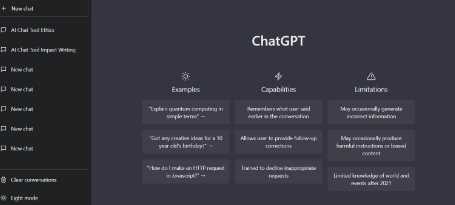In the age of digitalization, the Internet has become a hub of information. With just a few clicks, we can find the answers to our questions, learn new things, and get entertained. However, as the demand for content keeps increasing, so does the need for a solution to generate unique content. This is where ChatGPT comes into the picture.
ChatGPT is a language model developed by OpenAI, based on the GPT-3.5 architecture. It is designed to generate human-like responses to a wide range of prompts, such as questions, statements, or even commands. ChatGPT uses a combination of machine learning, natural language processing, and deep neural networks to understand the context of the prompt and generate a unique response.
One of the key features of ChatGPT is its ability to generate unique content. It achieves this by analyzing large volumes of text data, learning patterns and structures in the language, and using this knowledge to generate novel and coherent responses. Unlike traditional text generators that use predefined templates, ChatGPT can create content on a wide range of topics and in different styles, including persuasive, informative, or humorous.
To generate unique content, ChatGPT uses a process called “unsupervised learning”. This means that it does not require any human intervention or pre-existing knowledge to generate responses. Instead, it relies on a vast corpus of text data, including books, articles, and websites, to learn about language structures and patterns. This corpus is used to train the deep neural network that powers the language model, allowing it to recognize and reproduce these patterns.
Once the language model is trained, it can generate responses to any prompt by applying the patterns and structures it has learned. For example, if you ask ChatGPT to write an article on “The Benefits of Meditation,” it will analyze the prompt, identify the key concepts and themes, and generate a unique and coherent response based on what it has learned from the text data. This process ensures that the content generated by ChatGPT is unique, relevant, and informative.
ChatGPT’s ability to generate unique content has numerous applications in different fields. For instance, businesses can use it to create product descriptions, marketing materials, and social media posts. Bloggers and content creators can use it to generate ideas for articles, write headlines, or even write entire blog posts. Researchers can use it to summarize research findings, analyze data, or even generate hypotheses.
However, as with any technology, there are limitations to what ChatGPT can do. One of the biggest challenges is the potential for bias in the text data used to train the language model. If the data contains bias, such as gender or racial stereotypes, ChatGPT may reproduce those biases in its responses. To address this issue, OpenAI has implemented a range of measures, including using diverse text data and implementing debiasing techniques.
Another challenge is the potential for the language model to produce inaccurate or misleading responses. As a machine learning algorithm, ChatGPT relies on statistical patterns to generate responses. This means that it may produce responses that are technically correct but do not reflect the true nature of the topic. To address this issue, it is important to provide ChatGPT with accurate and reliable prompts, as well as to review and edit the generated content before using it.
Conclusion
ChatGPT is a powerful tool for generating unique and relevant content on a wide range of topics. Its ability to learn from vast amounts of text data and reproduce coherent responses has numerous applications in different fields. However, as with any technology, it is important to be aware of its limitations and potential biases. By understanding how ChatGPT works and using it responsibly, we can harness its potential to create high-quality content that engages and informs our audience.




Leave Comment